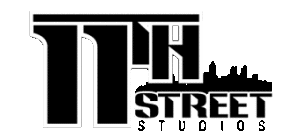Trap music is a music genre that originated in the early 1990s in the Southern United States. It is typified by its aggressive lyrical content and sound, where the instrumentals are propelled by 808 kick drums or heavy extended sub-bass lines, double-time, triple-time and other faster time division hi-hats, layered synthesizers, and “cinematic” strings.
The term “trap” was literally used to refer to the place where drugs are hidden in a car, where deals are made and how it is difficult to escape the lifestyle. The term originated in Atlanta, Georgia where rappers Cool Breeze, Dungeon Family, Outkast, Goodie Mob and Ghetto Mafia were some of the first to use the term in their music. Fans and critics started to refer to rappers whose primary lyrical topic was drug dealing, as “trap rappers.” David Drake of Complex wrote that “the trap in the early 2000s wasn’t a genre, it was a real place”, and the term was later adopted to describe the “music made about that place.”
The trap sound first emerged in the early 2000s as an enclosed scene in rough-edged neighborhoods in America’s Southern region. Across Texas, Alabama, Tennessee, Virginia and of course Atlanta, Georgia where local rappers like T.I., Gucci Mane, Young Jeezy, Triple 6 Mafia and Tity Boi (now known as 2 Chainz) all started branching out from what was then the sound of the hood: Crunk.
Along with producers like Shawty Redd, Drumma Boy, Mannie Fresh and Mike WiLL Made It, trap brought rap music to a new sonic dimension: with dark energy, a gothic feel, street culture (guns, drug houses, strippers) and an allover gigantic sound. Trap records dominated mixtapes and local radio, and blew up in nightclubs and strip clubs across the South.
In the early 1990s, rappers UGK, 8Ball & MJG, Three 6 Mafia, Cool Breeze, Kilo Ali, Master P, and Ghetto Mafia were among the first rappers to introduce trap music. In 1992, UGK’s “Pocket Full of Stones” was one of the earliest trap records to be released from their major-label debut album Too Hard to Swallow. It was also featured in the 1993 film Menace II Society. In 1996, Master P released his single “Mr. Ice Cream Man” off of his fifth studio album Ice Cream Man. The lyrics covered topics about life in “the trap”, drug dealing and the struggle for success. Local Southern rappers, such as Young Jeezy, Gucci Mane, Yo Gotti and T.I., as well as his rap group P$C, helped expand the popularity of the genre and trap records started to appear on local mixtapes and radio stations.
Due in part to the massive success of Outkast, Southern hip-hop gets more attention from mainstream American audience. The bounce-influenced New Orleans sound takes off with hits from the Cash Money Records crew, along with Houston’s chopped-and-screwed stuff and Tennessee’s Crunk music.
During the 2000s, trap began to emerge after the success of a number of albums and singles released at the time. In 2003, the first wave of trap music broke into mainstream with the release of T.I.’s second studio album Trap Muzik. It achieved major commercial success, selling over 2.1 million copies. The album’s lead single, “24’s”, was featured on EA’s popular video game Need for Speed: Underground. T.I. explained that “It’s informative for people who don’t know nothing about that side of life and wonder why somebody they know that live on that side of life act the way they do or do the things they do.” In 2005, the first wave continued with the success of Young Jeezy’s Let’s Get It: Thug Motivation 101. The album debuted at number two on the US Billboard 200, with 172,000 copies sold in its first week of release and was later certified platinum by the Recording Industry Association of America (RIAA) for shipment of over 1 million copies. The album also popularized producer Shawty Redd after creating the original signature trap sound. Some of the first wave of trap producers include DJ Toomp, Drumma Boy, Shawty Redd, Zaytoven and D. Rich.
In 2012, a new movement of electronic music producers and DJs emerged who began incorporating elements of trap music into their works. This helped expand its popularity among electronic music fans. A number of stylistic offshoots of trap developed, which in 2013 rose in viral popularity and made a noticeable impact on electronic dance music.
In the case of the 808-heavy, epic-feeling rap sound of trap music, it may seem like the genre popped up out of thin air in 2012. But its vast history spans back over a decade, coming from a very different place than its current buzzword status in electronic music.
Crunk and trap music travelled to hyped dancefloors in Europe within electronic music’s underbelly from the very beginning, through the likes of rap-heavy DJs such as Hollertronix (Diplo and Low Bee), Hudson Mohawke, Rustie, Jackmaster, Sinden, and more recently Lunice, Jacques Greene and MPC whiz Araabmuzik. But over the last year, trap gained a much-hyped interest in the electronic music world and blogosphere. It’s since evolved into a different beast, one that has a few opposed faces.
Explore Trap music:
When asked what is Trap music by DJ Mag, Drumma Boy, a multi-platinum Grammy-nominated producer, said:
“Trap is just a culture that we created in the South,” he tells. Growing up in Memphis and launching a production career in Atlanta as a teenager in the early 2000s, Drumma went from working with Southern heroes like Yo Gotti, Jeezy and UGK’s Bun B, to working with international stars such as Busta Rhymes, Kanye West and Lil Wayne. “New York had its sound, the West Coast had its sound, and we didn’t really have anything to stand for other than gospel, R&B and blues. Coming out of my city [Memphis], the biggest music influence is blues. And back in the Marvin Gaye days, we were known for Stax and the funk. Coming out of Nashville, the biggest influence is country. As far as Alabama goes, we’re a music state but we weren’t known for hip-hop. So for trap to come, it was a whole new movement.”
As for the music itself, he continues, “The trap just feels dirty; it’s that dirty, grimey 808 snare clap. There are only eight or nine instruments that make the trap sound, and then the music comes in with this gangsta, club feel. And the music hypnotizes. Trap is a lot like trance music, but it’s Southern trance music. And most trap has scary music or some type of ambiance. Sometimes it makes me think of The Twilight Zone.” He sings the eerie four-note melody. “It makes you feel like you’re in a dark dungeon like you’re in the trap itself.”
The evolving EDM trap has seen incorporation and stylistic influences from dubstep, in which trap has been hailed as the superseding phase of dubstep during the mid 2010’s. The new phase typically plays at 140 BPM with strong bass drops, which has been growing in popularity since 2013.
 In 2013, a fan-made video of electronic trap producer Baauer’s track “Harlem Shake” became an internet meme, propelling the track to become the first trap song to hit #1 on the Billboard Hot 100. Five popular EDM trap producers performed at the 2013 Ultra Music Festival in the United States – Carnage, ƱZ, DJ Craze, Baauer and Flosstradamus. The 2013 Tomorrowland festival featured a “Trap Stage”.
In 2013, a fan-made video of electronic trap producer Baauer’s track “Harlem Shake” became an internet meme, propelling the track to become the first trap song to hit #1 on the Billboard Hot 100. Five popular EDM trap producers performed at the 2013 Ultra Music Festival in the United States – Carnage, ƱZ, DJ Craze, Baauer and Flosstradamus. The 2013 Tomorrowland festival featured a “Trap Stage”.
 For lack of a definitive home of Trap music, 11th Street Studios (seen above) is considered by some as the de facto home for Trap music in Atlanta, having hosted recording sessions with old school Trap artist from Young Jeezy, to new school European artist’s like Hudson Mohawk.
For lack of a definitive home of Trap music, 11th Street Studios (seen above) is considered by some as the de facto home for Trap music in Atlanta, having hosted recording sessions with old school Trap artist from Young Jeezy, to new school European artist’s like Hudson Mohawk.
